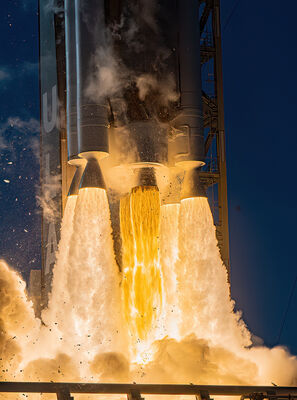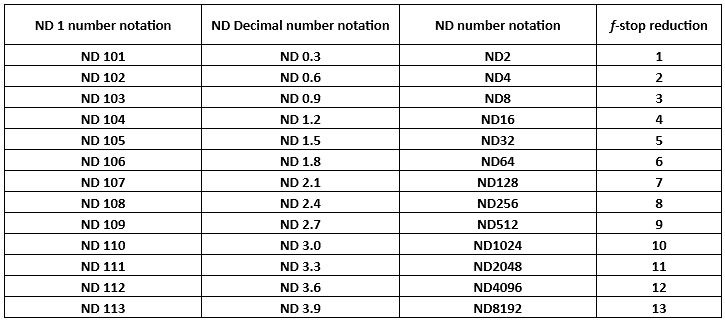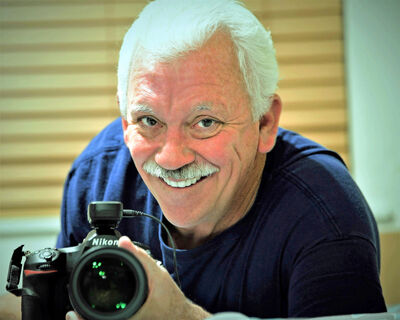ND Lens Filter
Mar 22, 2024 08:59:38 #
petrochemist
Loc: UK
BebuLamar wrote:
I don't even touch the ND filter. I keep thinking how much money I have to spend to get the extra half stop of light and I want use an ND to cut it down?
That extra money could be for a shallow DOF, rather than a faster shutter speed. even in the UK I've had times when the cameras ISO didn't go low enough to prevent over exposure in daylight.
However to reduce glare I'd normally go for a hood first, a polariser can work well to block reflected light of water or glass, but it won't work for most other sources of glare.
Mar 22, 2024 09:55:34 #
Personally, I look at the sky & then my watch before considering a polarizer filter. If the time is from about 11AM to about 2 PM, I'll consider using the polarizer...other than that it stays in my pack. ND filters, what specifically are you trying to achieve? Buy some used ones & experiment, determine what you like, what you don't
Mar 22, 2024 10:21:27 #
Brand wise, you want any of the B+W MRC models in your 72mm size. Regarding strength, here you need to make your own decision. Do you need 1-stop, 2-stop, other? The B&H Photo listings explain the 'strength' of each option in the technical details.
Examples, ND0.6 is 2-stop, ND0.9 is 3-stops, and so forth.
Examples, ND0.6 is 2-stop, ND0.9 is 3-stops, and so forth.
Mar 22, 2024 10:38:45 #
Paul Eveleth wrote:
I need a recommendation for a ND filter to be used on a Nikon wide angle 72mm Z6 lens. My objective is to reduce the amount light (glare) on bright sunny days. I've been searching the internet but can't find a seemingly good option. Thanks in advance.
Good filter brands:
B+W
URTH
HOYA
Use ND filters to reduce exposure. That is all they do. They lower the overall amount of light entering the lens, allowing you to use a wider aperture or longer exposure time or lower ISO. If you make video "films," they are valuable tools. I work at 1/48 second when recording at a filmic 24.000 frames per second. For video, I need between three and six stops of light reduction outdoors on a bright day, so I have sets of ND filters that include those values. I also have a ten stop ND filter for long exposure stills. (See equivalency chart, below.)
Use Polarizers to reduce glare from glass, water, leaves, and other polarized light reflections.
Use a Lens Shade or Lens Hood to reduce the possibility of lens FLARE, and its subsequent contrast reduction due to internal reflections within a lens.
Use high quality multi-coated lenses to reduce the effects of flare. The fewer elements and groups, the less flare you'll get (generally).
Mar 22, 2024 11:02:21 #
BebuLamar wrote:
I don't even touch the ND filter. I keep thinking how much money I have to spend to get the extra half stop of light and I want use an ND to cut it down?
YES, it is worth owning fast lenses for use in low light situations, but if you want to manipulate the variables for precise results, ND filters let you take advantage of those wide apertures, either for shallow depth of field, or for the effects of slow shutter speeds, or both, IN BRIGHT SUN.
Let's say I have a day-lit scene I want to record, containing a static subject, and blurred, moving objects, animals, or people in the background or foreground. The camera is on a tripod (or a monopod with good IBIS). The ND filter allows me to open the aperture for less depth of field, or to use a long shutter speed to improve moving object blur, or both.
I use ND for film-style video recording. Filmic video is typically recorded at 24.000 frames per second, at a 180° shutter angle, which is 1/48 second. (My Lumix can be set to use the equivalent of a movie camera's shutter angle, rather than shutter speed.)
At my camera's base ISO of 200, 1/48 in bright sun is going to require f/32! Micro 4/3 lenses don't go past f/16, usually, and past f/8, diffraction reduces sharpness. So I generally want to work between f/1.7 and f/5.6. With an ND 64 (six stops of light reduction), I can work around f/4, which is the sweet spot aperture on all my lenses. In open shade, I can slap on the ND 8 instead, and still have a reasonable aperture between f/4 and f/5.6.
Mar 22, 2024 11:28:15 #
Longlens24
Loc: Cedar Park, Texas
Wide angle lenses oftern require filters with thin metal rims so that the metal front edge does not get in the image. If possible put the ND filter on your lens and look through the camera viewfinder to make sure that there is no visible rim.
Mar 22, 2024 13:16:57 #
Hal Masover
Loc: Iowa and Florida
The first consideration is the glass. Cheap out on your filter and you're defeating the money you invested in your lens. The standard for good filter glass is made the Schott. I only buy filters made with Schott glass. But there's a lot of companies that use Schott glass including ones that sell their filters cheap, which brings us to the next consideration. Quality of the threads. I'm assuming you want to buy a threaded filter that you can screw on the end of your lens. Other options are magnetic filters and square filters both of which are part of systems and involve more investment than I personally would make in filters. So back to the threads. The glass is easy. Just stick with Schott. But there's no easy way to figure out if you're getting good quality threads on your filter and that's important. The rough rule of thumb is that cheap filters are the ones that tend to get stuck when you're putting them on or taking them off. Poor quality material and/or machining on those threads. Of the three brands mentioned so far, B&W, Breakthrough and K&F, Breakthrough is an excellent middle choice. Tiffen was also mentioned and it's another excellent middle choice. K&F is hit and miss. Some of their stuff is good enough for very little money and some of it is crap so for this reason I avoid that brand. You seem committed to buying an ND filter. I agree with other comments that if you're trying to reduce glare you're probably better off with a polarizing filter. But if you are intent on an ND filter, you probably want a 6 stop filter. Variable filters tend to be overall lower quality than non-variable. But my main advice is stick with the known decent quality for the buck brands like Breathrough and Tiffen.
Mar 22, 2024 13:39:07 #
I have had some good results using a circular polarizer. I have had Heliopan for 25 years. However there are many out there that are equal or better. I have used the Heliopan on the Nikon 200-500 and it worked well for wildlife shots at the beach and lake where reflections are all over.
Mar 22, 2024 14:51:43 #
Mar 22, 2024 15:11:51 #
Keep an eye out for used 72 mm ND filters at B&H to save a few bucks. I bought a used 72 mm Lenskins "big stopper" ND from them; it is like new and I am very happy with the quality.
Mar 22, 2024 15:14:15 #
I've bought used filters from KEH, another source for our OP to consider.
Mar 22, 2024 16:11:31 #
billnikon wrote:
Tiffen makes good ones, and B&H offers K&F... (show quote)
Nice house you have their, Bill 🤔🤔🤔🤔🤔
Mar 22, 2024 16:22:16 #
Tote1940
Loc: Dallas
I guess you want to reduce total amount of light, not selected light light glare.
Then ND or lower ASA Higher shutter smaller aperture all do the same, even if RAW post processing
Have a partial ND filter “ landscape “ :pretty dark on top graduated in middle clear at bottom, it is supposed to allow some detail in sky while preserving detail in foreground , never used it, forget to take it…
For selected reflected light light off water polaroid or change angle of shot. They also help photographing glass covered pictures, cut glare of glass but fairly tricky
May be you could upload some example of what problem are you tackling
Then ND or lower ASA Higher shutter smaller aperture all do the same, even if RAW post processing
Have a partial ND filter “ landscape “ :pretty dark on top graduated in middle clear at bottom, it is supposed to allow some detail in sky while preserving detail in foreground , never used it, forget to take it…
For selected reflected light light off water polaroid or change angle of shot. They also help photographing glass covered pictures, cut glare of glass but fairly tricky
May be you could upload some example of what problem are you tackling
Mar 22, 2024 16:55:01 #
BebuLamar wrote:
I don't even touch the ND filter. I keep thinking how much money I have to spend to get the extra half stop of light and I want use an ND to cut it down?
Agreed. My reaction to ND has always been that Im firmly averse to discarding our most valuable (our only ?) resource.
Mar 22, 2024 20:39:09 #
As one that uses ND filters fairly often it doesn’t sound like that’s what you need. Essentially the only reason to use an ND filter is to be able to use slower shutter speeds. A polarizer might help because it can reduce or eliminate reflections from non-metallic surfaces. An example of exactly what you mean by “glare” would be helpful.
If you want to reply, then register here. Registration is free and your account is created instantly, so you can post right away.






